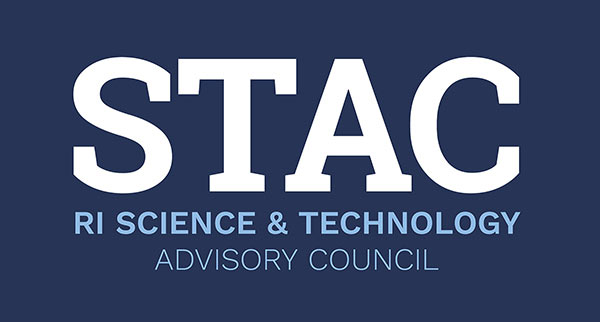Dr. Christopher Reid, Assistant Professor at Bryant University
Dr. Joseph Bliss, Associate Professor at the Warren Alpert Medical School of Brown University
In the autumn of 2010, Dr. Joseph Bliss, MD/Ph.D., received a group email from Rhode Island EPSCoR. In it, the greater Rhode Island scientific research community was introduced to Christopher Reid, Ph. D., a biochemist. Reid had arrived in August from Ottawa, Canada to take up an Assistant Professorship in Bryant University’s Department of Science and Technology. The email included his credentials and areas of expertise. As Dr. Bliss gave the email a perfunctory read he was excited to read about Reid’s being an expert in glycobiology and protein chemistry — and “open to collaborations with other scientists.” Bliss quickly emailed Reid.

For years Dr. Bliss, a neonatologist at Women and Infants Hospital recently promoted to Associate Professor at the Warren Alpert Medical School of Brown University, had been studying Candida albicans, a common fungal pathogen. Candida is very dangerous to immunocompromised patients, a group that includes newborn infants. Premature infants are particularly vulnerable to the fungus, which is associated with death or severe impairment in more than 50% of premature infants (the more premature the infant, the more vulnerable his immune system.) Dr. Bliss and his laboratory associates, while attempting to determine the role of antibody in host defense against the organism, had observed that antibodies were binding to certain proteins. The problem was determining which ones. “It was trickier than I had anticipated,” Bliss says. Reading about Reid, “I figured he could help with that.”
In his first email to Reid, Dr. Bliss wrote: “Our areas of expertise might mesh.” Indeed, they did, a fact quickly confirmed by ensuing events. Within weeks of making contact, the two completed an application for a Science and Technology Advisory Council Collaborative Research grant. In January 2011 they were notified that the project, “Antigenic Targets of C. Albicans-Specific Antibody Fragments,” had been approved for a $200,000 STAC award (Bryant University’s first STAC award). By February 2011, Reid was stocking his lab with the professional-grade protein chemistry equipment that would be required for the project, which sought to find the proteins that might answer the question of how to treat C. albicans.
To assist with the work, Reid assembled an enthusiastic team of organic chemistry students, undergraduates culled from his 300-level course. The students were trained in specialized extraction techniques. One was even trained in how to culture C. albicans at Bliss’ laboratory at Women and Infants Hospital in Providence. As Reid points out, “The students found themselves doing graduate-level work broken down to an undergraduate level.”

The next step was to harvest long filamentous hyphae forms of Candida (strains that are unable to form hyphae are defective in causing infection.) Reid’s group experimented with different extractions to find an enrichment strategy for the antigen. While the project proved far trickier than anticipated — Reid concedes, “We thought we had it twice, but those turned out to be contaminants.” — both Reid and Bliss feel they made substantial progress in determining what the antibodies are binding to. With a better understanding of the biochemical nature and level of expression, “Now it will be easier to approach experimentation,” says Bliss.
The work has had many subsidiary benefits. Bryant students learned sophisticated extraction techniques. They presented their data at Northeastern University in the spring of 2011. Work with Dr. Bliss and exposure to his lab exposed them to world-class research practices. One student even used her experience to help land a job with Amerian BioAnalytical in Massachusetts; she plans to eventually pursue a masters in the field.

The Reid-Bliss collaboration has yielded benefits beyond those associated with the lucky group of Bryant students. “It’s built a substantial infrastructure for this type of work at Bryant,” says Dr. Bliss, who indicates that this should lead to additional grant opportunities for the school. Reid concurs: “The STAC award really allowed us to get up and running.”
Even the application process had benefits: it led to Reid’s meeting a mentor, Brown University Chemistry Department Associate Professor Dr. Amit Basu, with whom he is applying for an INBRE grant.
Since this STAC award was granted, Bryant has gone from, as Reid puts it, “No ability for protein chemistry to total ability”; students have enjoyed professional-level training; and Reid has greatly expanded his research network: “I had no network when I got here. I’m in my third year now and already have a pretty decent one. I just gave a talk to the Bowdoin (College) Chemistry Department.”
When asked if he and Bliss met their project goal, Reid answers unhesitatingly, “We think so.”
